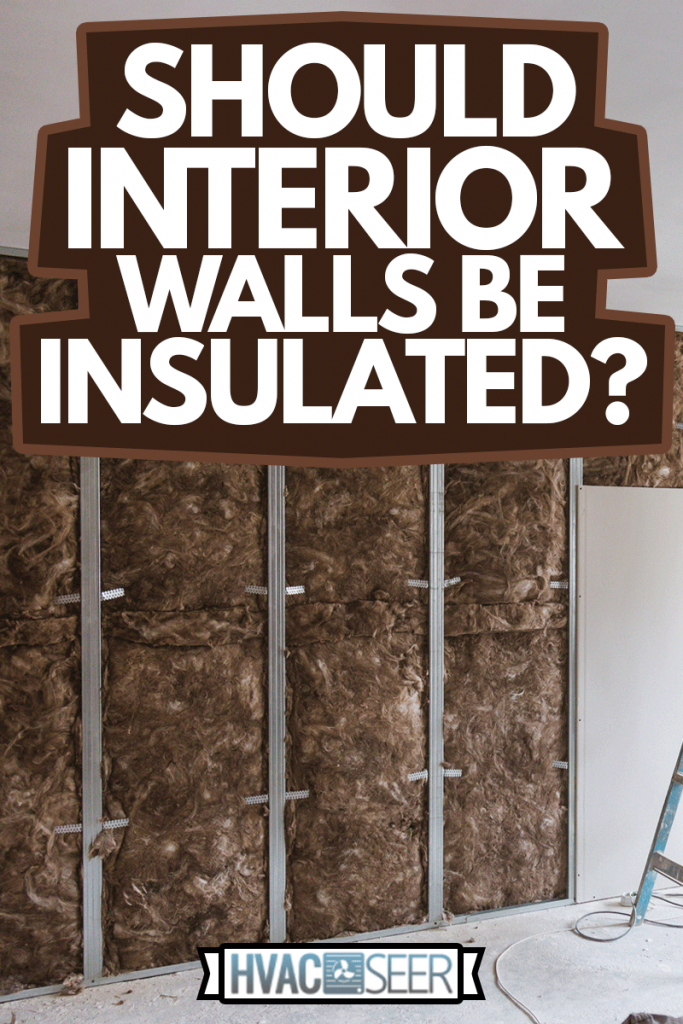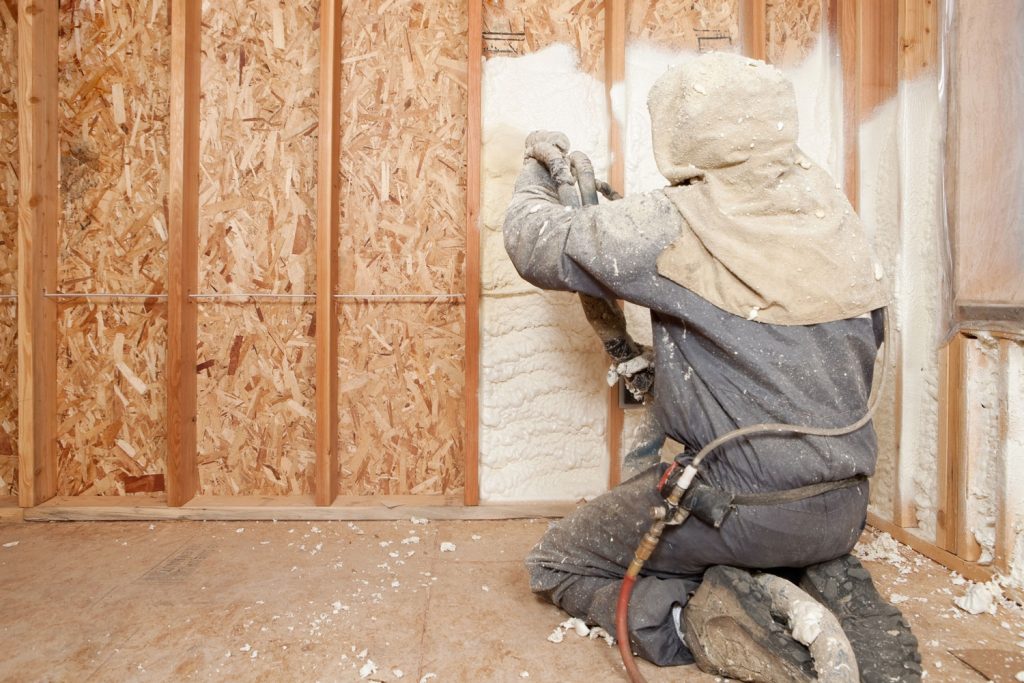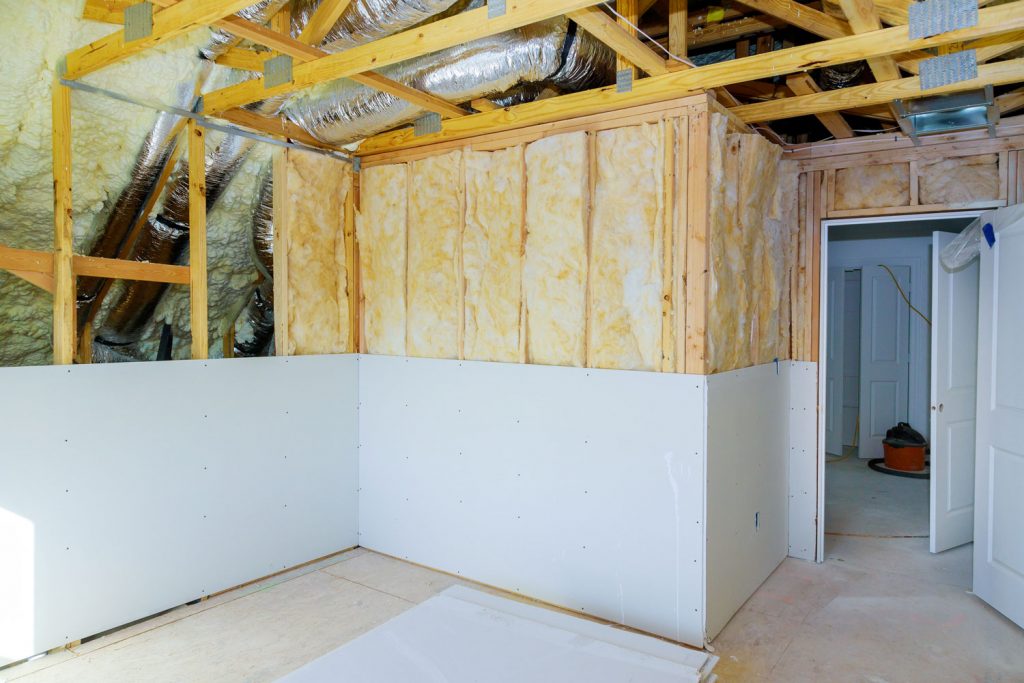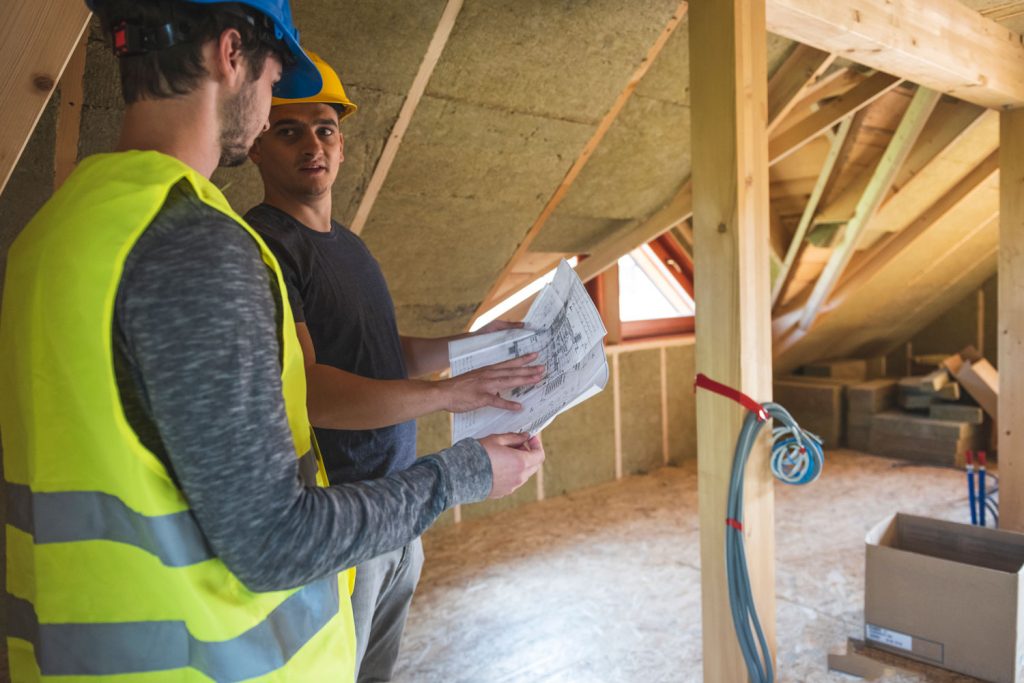If you're new to home buying or plan on building your own new home, you may be wondering about best practices when it comes to insulation. It's no secret that most modern homes will have insulation in various parts of their framing. But do interior walls need to be insulated? We did the research to bring you the answer.
Yes, interior insulation is standard in modern homes. Most building codes will require some wall insulation in homes and commercial buildings. The type and thickness of insulation to use on your interior walls will depend on your local guidelines.
Outside of adhering to building codes, homeowners install insulation in interior walls for various reasons including energy cost savings, temperature regulation, and others. Continue reading to learn more about the benefits of installing insulation in your walls.

Reasons To Install Insulation in Interior Walls
Whether you hire a contractor or decide to install the insulation yourself, the project will be something that you may need to budget for, as it can get costly. The type of insulation you use and the amount you need for your walls will vary depending on the square footage of each wall and the level of insulation required by your building codes.
Heating and Cooling Regulation

The main reason insulation is used in homes and commercial buildings is its ability to regulate interior temperature. The density and thickness of the insulation prevent the outside temperature from having a significant impact on the temperature inside the home.
Insulation allows your home to keep warm air indoors during the colder months and cool air in the warmer months. Think of wall insulation as a protective barrier between your home and outside elements.
Placing insulation inside your walls will limit the air movement from the outdoors, helping you save anywhere from 30% to 50% in electricity and gas bills throughout the year.
Prevent Moisture Issues
Another important benefit of insulating your interior walls is preventing issues with moisture. If you live in a fairly humid region or one that has extreme weather during colder months, wall insulation is a must.
Insulation can trap moisture within interior walls and prevent issues with condensation, mildew, and mold.
For example, if temperatures reach below 40 degrees Fahrenheit in the winter, you may find your walls (and windows) becoming very cold, which can cause interior temperatures to drop significantly. This, in turn, can make your home extremely uncomfortable.
Excessive moisture in your home can also cause issues with electrical appliances and plumbing (i.e. frozen or bursting water pipes).
Sound Dampening Benefits
Installing insulation in your interior walls will aid in soundproofing. Insulation will help dampen sounds from both outside and inside the home.
So, for example, if you have a music studio, children's playroom, or loud entertainment system, insulation can reduce the sound that travels from one room to another—maximizing comfort in each space.
Wall insulation can reduce sounds by 25% to 40% depending on its R-value. Mineral wool insulation is often used for this specific purpose, as it is denser than other types of insulation per square inch.
Why are my interior walls so cold?

There are a few reasons why interior walls may feel cold to the touch. Here are the most common ones.
Old or poorly-installed wall insulation
Insulation that is old or was poorly installed is often the main reason for cold interior walls. The reason is that when outside temperatures drop significantly, the thermal barrier (the insulation) between the inside of your home and the outside is no longer effective.
The construction materials used to build most homes and buildings include brick and masonry, concrete, wood, and stucco. These materials and the drywall inside your home are not practical thermal barriers.
To determine if this is the cause of your home's cold walls, you can either take out a few pieces of drywall from each interior wall or remove bricks from the exterior (the latter will be more involved and expensive). If the insulation is damaged, uneven, or simply no longer viable, it's best to replace it.
Poorly installed plumbing and fixtures
Your walls could also become cold to the touch when you have plumbing pipes and other fixtures that are installed without a sufficient amount of insulation around them. Sometimes these pipes also have screws, bolts, and other fasteners that can cause voids in the walls.
This allows outside temperatures and leaking water from the roof or attic to penetrate the wall cavity.
As a result, the wall will develop cold points, and you will likely also have an issue with dampness and mold if it's not treated. The best thing to do in this case is to determine where the voids are in the wall by following the pipes and installing insulation where it is needed.
If you find a problematic fixture, you should remove and reposition it. In some cases, as with heat fixtures, you may not be able to remove them, in which case it's best to consult with a contractor to determine the best way to mitigate the problem.
How do you tell if your walls are insulated?

The easiest way to determine if your walls are insulated is to simply cut a few holes in the drywall in various places. This is a lot easier, faster, and cheaper than cutting the exterior material of your home.
Once you've determined the status of any installation, you can repair the holes in the drywall using a repair kit or drywall putty. It helps to have a long flexible flashlight and mirror to see fully inside of the drywall.
Read more details about this drywall repair kit on Amazon.
How much does it cost to insulate interior walls?
The cost to insulate interior walls will depend on the square footage of the walls and the type of insulation you use. For example, fiberglass rolls and batts will cost anywhere from $0.75 to $1.20 per square foot.
So, for example, if you're insulating the walls of a home that's only 1,300 square feet, it'll cost you anywhere from $975 to $1,560 for the insulation alone. This price doesn't include other materials and labor. You can expect to pay $0.50 to $1.30 per square foot for the project labor if you don't plan to do it yourself.
If you choose to go with spray foam insulation, you can expect to pay anywhere from $0.40 to $0.70 for the insulation alone. However, the labor will generally be more expensive (as it's more involved) and can cause the total cost to range anywhere from $1.75 to $4.80 per square foot.
Another option is to go with rigid foam insulation, which will typically run anywhere from $1.10 to $1.45 per square foot for the insulation alone. Installing this type of insulation is relatively easy, and combined with the labor, the total cost can run anywhere from $1.70 to $3.50 per square foot.
Keep in mind that you can always save yourself half of the project cost by installing the insulation yourself. However, if your walls are already built and require blown-in insulation, it may be best to contract the job to a licensed professional.
Can you insulate interior walls without removing drywall?

Yes, but the only way to do this is to use blown-in insulation. The process is relatively simple, but it's pretty involved.
You'll first need to drill multiple holes in the wall. Next, you'll need to use an insulation blower machine to blow the insulation material inside of the wall. And finally, you'll have to patch the holes you created in the wall with drywall repair kits or putty.
Find this drywall putty on Amazon.
Wrapping Things Up
It's essential to have insulation on the interior walls of your home to have effective temperature regulation. A lack of insulation can lead to extreme temperatures during the hot and cold months of the year and issues with moisture, plumbing, and electrical appliances.
Before you go, be sure to check out these other posts:


